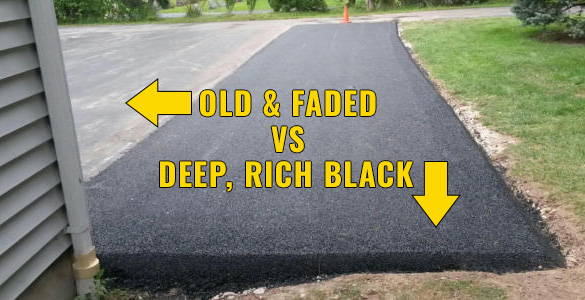Cold Mix Asphalt Vs. Hot Mix Asphalt: Which Is Right for You?

Make-up Differences
Cold mix and hot mix asphalts vary significantly in their make-up, with unique attributes that influence their performance and applications. Cold mix asphalt is produced by emulsifying the asphalt binder with water and an emulsifying representative before mixing it with accumulation. This approach permits the asphalt to be practical at reduced temperatures, making it optimal for short-lived repairs and for usage in chillier weather problems. Warm mix asphalt, on the various other hand, is produced at high temperatures, typically between 300-350 ° F, which assists to achieve better compaction and a much more resilient last item. The warm mix asphalt production process entails heating up the accumulation and asphalt binder individually prior to combining them at the asphalt plant.
Furthermore, cold mix asphalt often tends to be less thick and a lot more flexible than warm mix asphalt. This adaptability makes it better suited for locations with greater degrees of activity, such as driveways or roads with hefty traffic. In contrast, warm mix asphalt is recognized for its high resilience and resistance to rutting and fracturing, making it a favored choice for freeways and high-traffic roadways where longevity is essential.
Installation Refine Variations
The process of installing cold mix and hot mix asphalt shows remarkable differences in their needs and procedures. In comparison, hot mix asphalt demands an extra fancy installment procedure. Due to the heating needs, warm mix asphalt setups are commonly carried out by specialists with customized tools, guaranteeing a more irreversible and structurally audio result.
Sturdiness and Durability Variables
When thinking about asphalt choices, toughness and longevity are vital factors to review for long lasting pavement performance. Warm mix asphalt (HMA) is known for its extraordinary sturdiness and durability.
In regards to long life, HMA usually outperforms CMA due to its remarkable stamina and resistance buildings. HMA pavements have a longer solution life, requiring less frequent repair services and maintenance, which can translate to cost financial savings in the future. Additionally, HMA sidewalks are much more conveniently adjustable to satisfy certain project demands, better enhancing their resilience.
Price Factors To Consider
Considering the financial effects is a crucial facet when evaluating the choice in between warm mix asphalt (HMA) and chilly mix asphalt (CMA) for sidewalk jobs. While the preliminary price of hot mix asphalt is generally greater than that of cool mix asphalt, HMA frequently gives an extra economical solution over time due to its premium toughness and durability. HMA is known for its capability to stand up to heavy web traffic lots and severe weather, decreasing the requirement for constant repair services and upkeep. On the various other hand, cold mix asphalt is extra cost effective upfront yet might require more regular patching and resurfacing, bring about higher maintenance expenses in time.
In enhancement to product prices, it's vital to consider the expenditures associated with setup and maintenance when contrasting HMA and CMA. HMA usually requires customized equipment and knowledgeable labor for appropriate link setup, which can impact total task costs. Alternatively, CMA is less complicated to work with and can frequently be applied utilizing simpler techniques, possibly lowering installment expenditures. Ultimately, the choice between HMA and CMA need to take right into account not just the preliminary expense yet likewise the long-term monetary implications to determine one of the most affordable choice for the specific sidewalk task.
Environmental Effect Comparison
Comparison of the environmental effects between warm mix asphalt (HMA) and Look At This chilly mix asphalt (CMA) exposes unique differences in sustainability methods. HMA manufacturing calls for high temperatures, leading to raised energy usage and greenhouse gas discharges.
Moreover, using CMA frequently includes recycling existing asphalt sidewalk, promoting source preservation and reducing the amount of waste sent out to garbage dumps. This reusing aspect additionally enhances the sustainability of CMA contrasted to HMA. On the whole, when taking into consideration the ecological effect, CMA arises as an extra ecologically lasting selection due to its reduced power needs, reduced discharges, and the possibility for recycling existing materials. By choosing for CMA over HMA, road construction projects can add positively to environmental conservation efforts.
Verdict
Finally, the option between cold mix asphalt (CMA) and hot mix asphalt (HMA) depends on various variables such as structure, setup procedure, toughness, long life, cost, and environmental impact. asphalt repair. While CMA uses a cost-efficient and quick remedy for small repair services, HMA makes certain premium sturdiness and durability for rush hour locations. Take into consideration these aspects carefully to establish which kind of asphalt is the best choice for your paving requires

Taking into consideration the monetary effects is a crucial facet when evaluating the option between warm mix asphalt (HMA) and chilly mix asphalt (CMA) for pavement jobs. While the first expense of warm mix asphalt is usually greater than that of cool mix asphalt, HMA commonly offers a more affordable option in the lengthy run due to its premium longevity and longevity. asphalt repair.Contrast of the ecological effects in between hot mix asphalt (HMA) and chilly mix asphalt (CMA) exposes unique distinctions in sustainability methods.In final thought, the selection in between cold mix asphalt (CMA) and hot mix asphalt (HMA) depends on different variables such as structure, installment procedure, resilience, durability, cost, and ecological influence